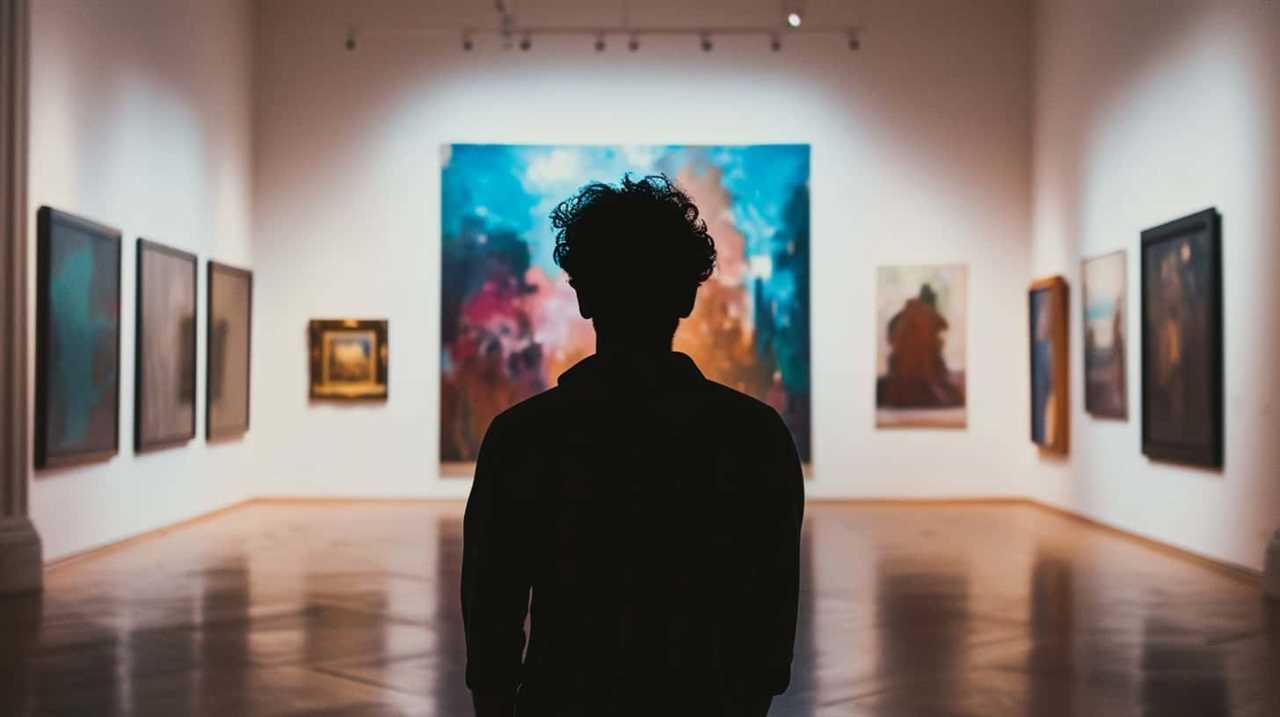In the world of art, beauty is akin to a kaleidoscope of hues, a choreography of forms, and a harmony of feelings. This topic has fascinated great artists throughout the ages.
From Picasso’s bold strokes to Monet’s ethereal brushwork, each artist offers a unique perspective on beauty. Van Gogh’s vivid visions, Frida Kahlo’s introspective musings, and Warhol’s provocative interpretations further enrich our understanding. Dali’s surreal notions, O’Keeffe’s captivating landscapes, Hockney’s reflective observations, and Pollock’s abstract concepts push the boundaries of what beauty can be.
As we delve into the thoughts and philosophies of these artistic giants, we gain insight into the multifaceted nature of beauty and its profound impact on our lives.
Key Takeaways
- Picasso believed beauty could be found in the abstract and unconventional.
- Monet believed beauty lies in the fleeting moments and play of light and color.
- Van Gogh used vibrant colors and expressive brushstrokes to convey beauty.
- Kahlo redefined beauty and challenged societal norms through her art.
Picasso’s Perspective on Beauty
Picasso, one of the most influential artists of the 20th century, believed that beauty could be found in the abstract and unconventional. His evolution as an artist reflects this perspective, as he continually pushed the boundaries of traditional art forms. Picasso’s influence on the art world can’t be overstated, as he paved the way for the exploration of new styles and ideas.
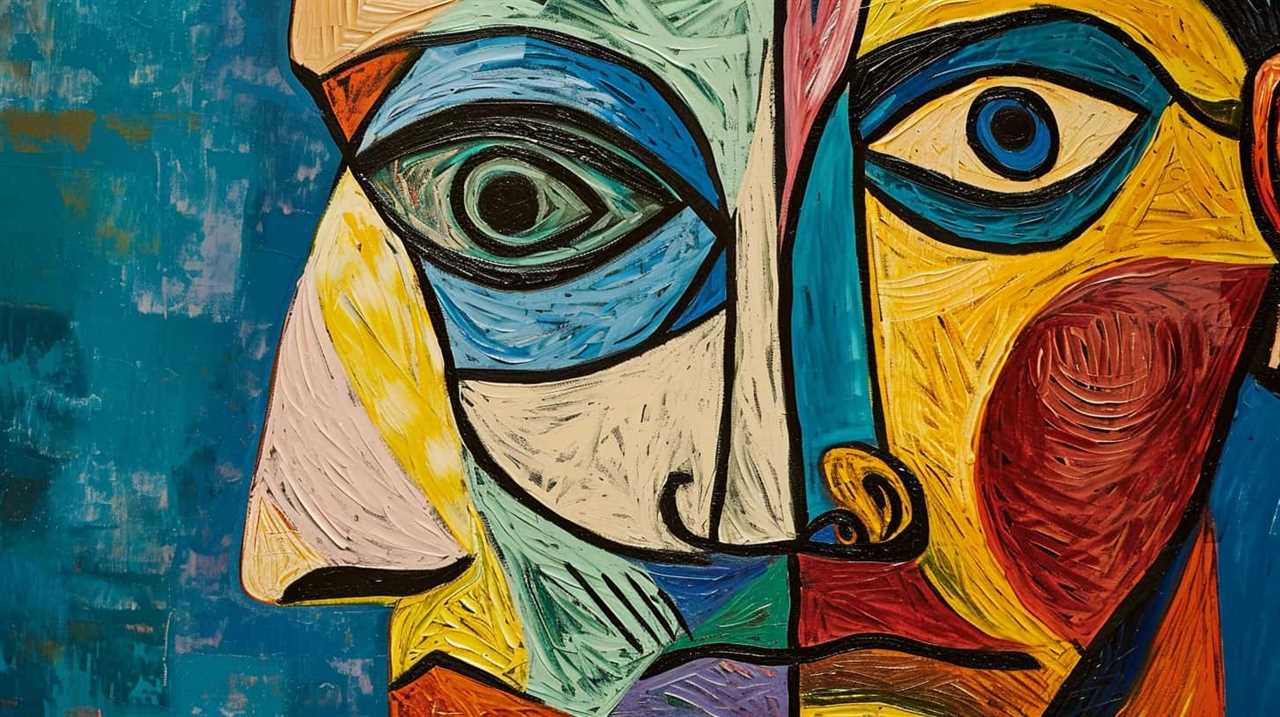
Throughout his career, Picasso’s artistic style underwent significant transformations. He began as a young prodigy, displaying exceptional skill and talent in traditional painting techniques. However, as he grew older, he started to experiment with different styles and techniques, eventually leading him to co-found the Cubist movement. This revolutionary approach sought to depict objects from multiple perspectives, breaking them down into geometric forms and challenging the notion of representational art.
Picasso’s evolution as an artist had a profound impact on the art world. His unconventional approach and willingness to break free from artistic norms inspired countless artists to explore new avenues of creativity. The influence of his Cubist period can be seen in various art movements that followed, such as Abstract Expressionism and Surrealism.
Picasso’s unconventional perspective on beauty continues to resonate with artists and art enthusiasts today. His ability to find beauty in the abstract and unconventional serves as a reminder that artistic expression knows no boundaries. Picasso’s influence on the art world is undeniable, and his legacy as an innovator and pioneer of modern art continues to inspire generations of artists.
Monet’s Musings on Beauty
Monet, another renowned creative, shares his own unique perspective on beauty. As one of the pioneers of the Impressionist movement, Monet’s approach to capturing the essence of beauty was groundbreaking. He believed that beauty lies in the fleeting moments, the ever-changing play of light and color. Through his vibrant brushstrokes and delicate use of color, Monet aimed to convey the transitory nature of beauty, capturing the essence of a scene rather than its precise details.
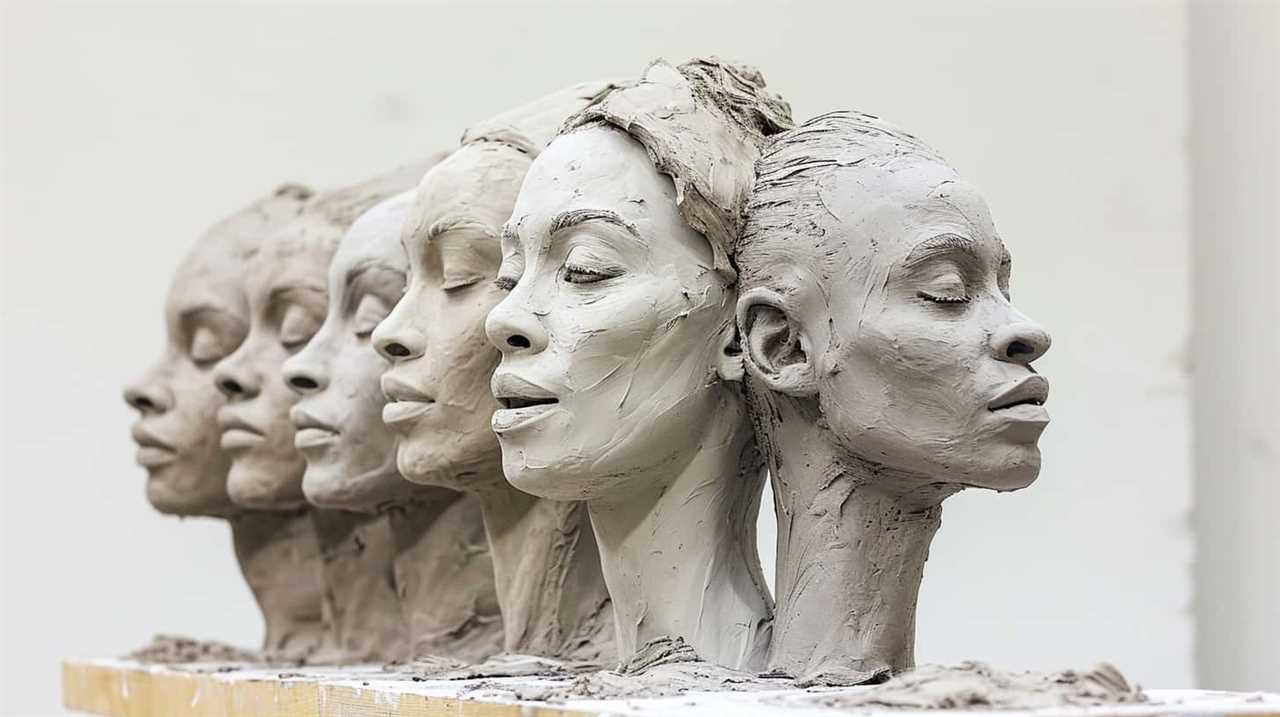
Monet’s impressionist approach revolutionized the art world and had a profound influence on modern art. His emphasis on capturing the atmospheric effects of light and the fleeting moments of nature inspired countless artists to explore new ways of depicting beauty. The loose, spontaneous brushwork and bold use of color that became synonymous with Impressionism can be traced back to Monet’s innovative techniques.
Looking beyond the canvas, Monet’s influence on modern art extends to the way we perceive beauty. He challenged the traditional notions of beauty, encouraging us to appreciate the subtle nuances and imperfections in the world around us. Monet’s musings on beauty remind us that it isn’t just about what meets the eye, but also about the emotions and sensations that a work of art evokes.
With Monet’s vision of beauty in mind, let’s now delve into Van Gogh’s unique perspective on this captivating subject.
Van Gogh’s Vision of Beauty
Now let’s explore how Van Gogh’s unique perspective on beauty adds another layer to our understanding.

Van Gogh, known for his vibrant and expressive artworks, had a distinct vision of beauty that was characterized by his unconventional use of color and brushwork technique.
Van Gogh’s color palette was unlike anything seen before. He’d a penchant for using bold and intense colors, often juxtaposing complementary hues to create visual tension and energy. His paintings were alive with vibrant oranges, yellows, and blues, evoking a sense of dynamism and emotion. This bold color palette was a reflection of Van Gogh’s inner world, as he believed that color had the power to convey the intensity of his emotions and experiences.
In addition to his innovative use of color, Van Gogh’s brushwork technique was equally revolutionary. He applied paint with thick and visible brushstrokes, creating a textured and expressive surface. This technique, known as impasto, added depth and dimension to his paintings, allowing the viewer to feel the energy and movement within the artwork. Van Gogh’s brushwork was a manifestation of his passion and intensity, capturing the essence of his subjects in a visceral and raw manner.
Van Gogh’s vision of beauty challenged traditional notions and pushed the boundaries of artistic expression. Through his bold color palette and expressive brushwork technique, he created a visual language that resonated with viewers on a profound level. His artworks continue to inspire and captivate audiences, reminding us of the power of individual perspective in shaping our understanding of beauty.
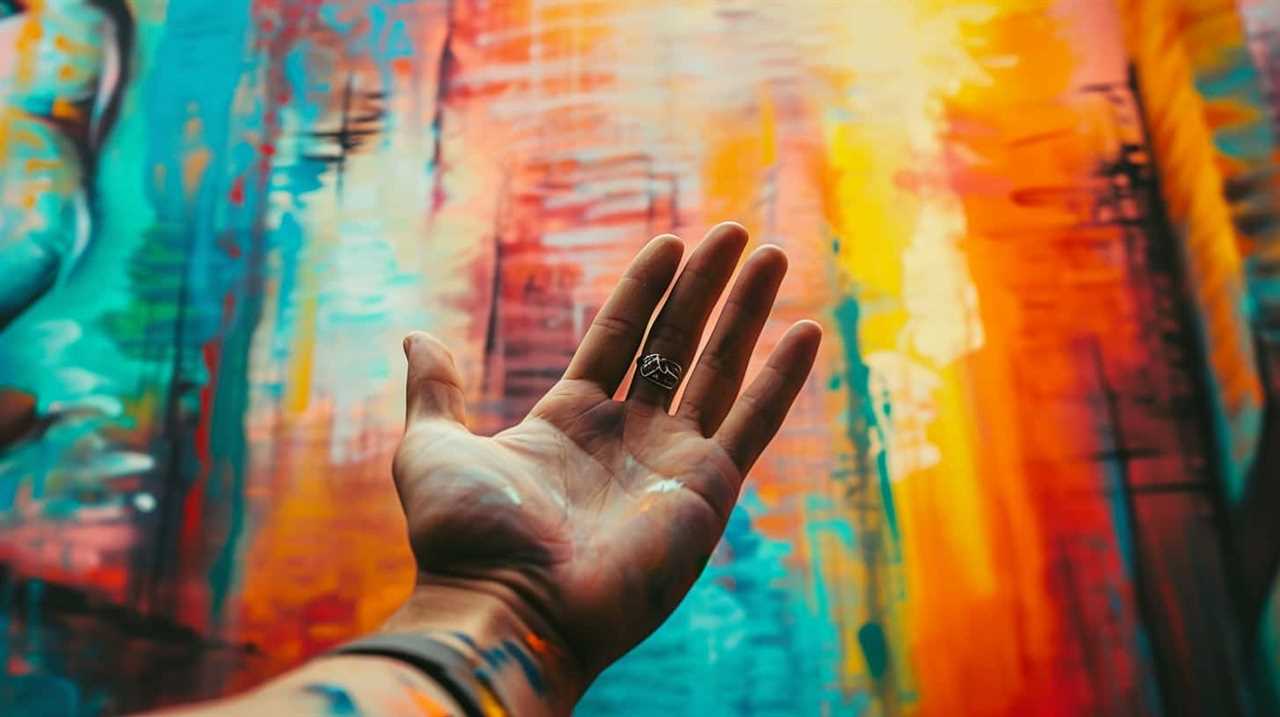
Frida Kahlo’s Thoughts on Beauty
Continuing our exploration of renowned creatives’ perspectives on beauty, let’s delve into Frida Kahlo’s profound thoughts on the subject.
As a trailblazing Mexican artist, Kahlo used her artistic expression to redefine beauty and challenge societal norms. One of the most striking aspects of Kahlo’s work is her use of self-portraits, through which she explored her physical and emotional experiences.
In Kahlo’s self-portraits, we see a raw and unapologetic representation of her own unique beauty. She embraced her physical flaws, such as her signature unibrow and mustache, and saw them as symbols of strength and defiance. Through her art, Kahlo rejected the conventional standards of beauty imposed by society, encouraging us to embrace our authentic selves.
Beyond physical appearance, Kahlo also explored the beauty of emotions and the human experience. Her paintings often depicted her inner struggles, pain, and resilience. Kahlo believed that true beauty lies in embracing all aspects of our existence, including the hardships and vulnerabilities that make us human.
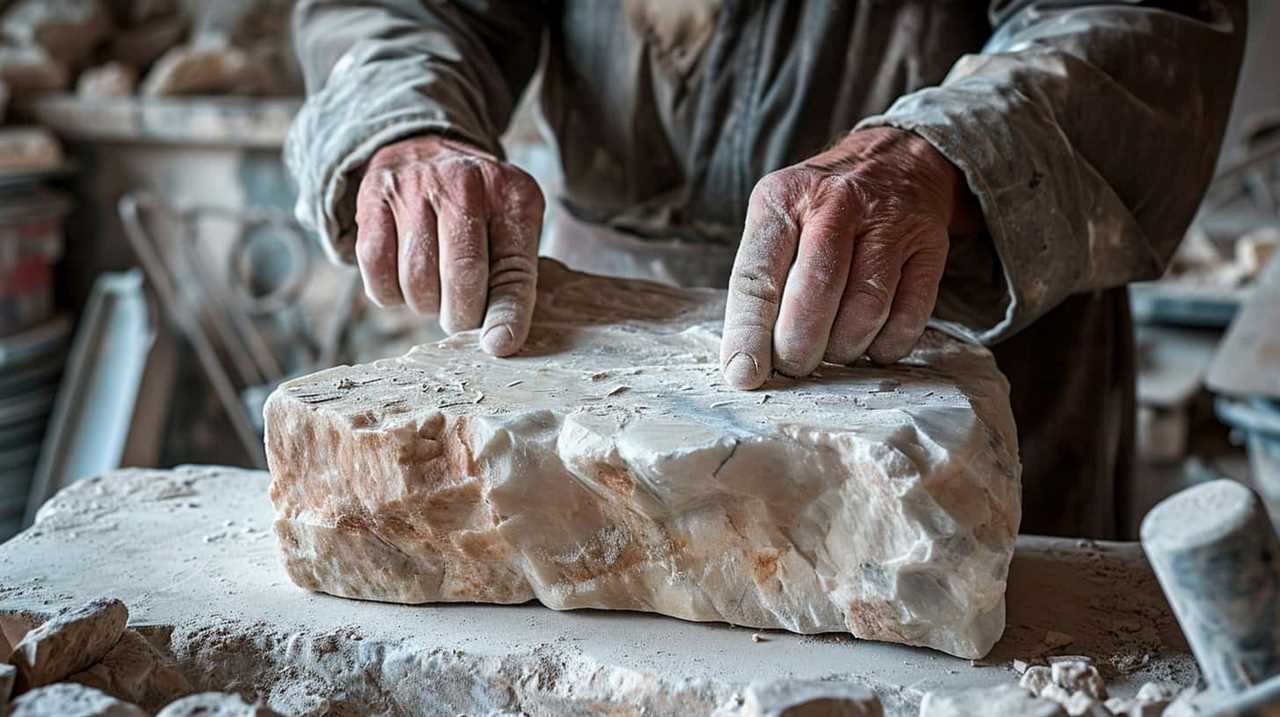
Frida Kahlo’s thoughts on beauty challenge us to redefine our understanding of this complex concept. She encourages us to celebrate our individuality and embrace the beauty that comes from within. By embracing our flaws and sharing our stories, we can find beauty in our own unique expressions of self.
Warhol’s Interpretation of Beauty
Warhol’s interpretation of beauty delves into the transformative power of art. As one of the most influential figures in modern art, Warhol’s impact on the art world can’t be overstated. His unique approach to beauty revolutionized the way we perceive and appreciate art.
Warhol’s influence on modern art is particularly significant through his involvement in the pop art movement. Pop art challenged traditional notions of beauty by incorporating popular culture and consumerism into artistic expression. Warhol’s iconic works, such as his Campbell’s Soup Cans and Marilyn Monroe portraits, captured the essence of mass production and celebrity culture, emphasizing the beauty found in everyday objects and media icons.
Through his art, Warhol explored the concept of beauty as something that’s constantly evolving and subjective. He embraced the idea that beauty can be found in the mundane and ordinary, elevating the ordinary to the extraordinary. This perspective challenged conventional standards of beauty and encouraged viewers to question their own perceptions.
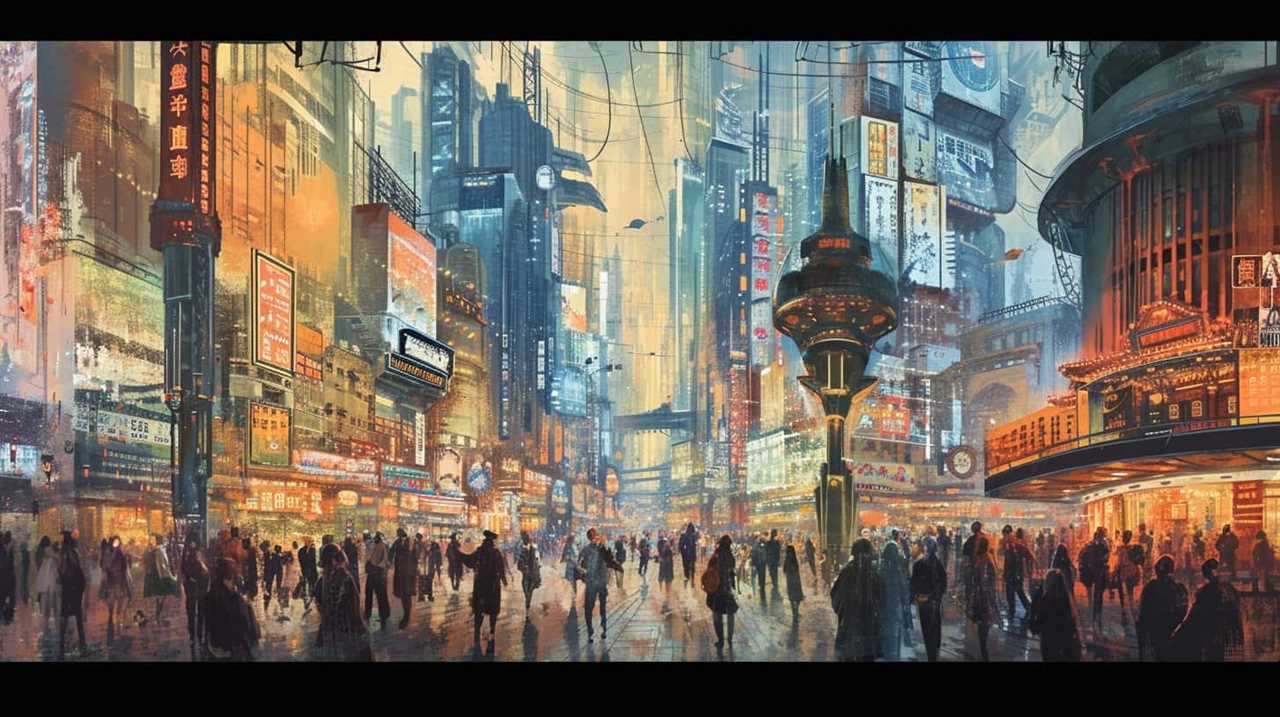
Warhol’s interpretation of beauty not only transformed the art world but also had a profound impact on society. By blurring the lines between high and low culture, he democratized art and made it accessible to a wider audience. His bold and innovative approach continues to shape contemporary art and inspire new generations of artists.
Dali’s Surreal Notions of Beauty
Occasionally, we encounter Salvador Dali’s surreal notions of beauty, which challenge our perceptions and expand our understanding of artistic expression. Dali, a prominent figure of the Surrealist movement, pushed the boundaries of traditional art and embraced the power of the subconscious mind.
Here are four key aspects of Dali’s surrealism that highlight his unique interpretation of beauty:
- Dreamlike Imagery: Dali’s works often feature bizarre and fantastical images, blurring the line between reality and imagination. His paintings, such as ‘The Persistence of Memory,’ with its melting clocks, evoke a sense of mystery and intrigue.
- Symbolism: Dali used symbols to convey deeper meanings and explore the human psyche. For example, the recurring motif of the melting clock represents the fleeting nature of time and the fragility of human existence.
- Juxtaposition: Dali juxtaposed unrelated objects and elements to create unexpected and thought-provoking compositions. This technique challenged conventional notions of beauty and encouraged viewers to question their preconceived ideas.
- Subconscious Exploration: Dali believed that the true essence of beauty lies within the subconscious mind. Through his artworks, he sought to tap into the hidden depths of the psyche, revealing the strange and surreal beauty that exists beneath the surface.
Dali’s surreal notions of beauty continue to captivate and inspire artists and art enthusiasts alike, reminding us of the power of artistic interpretation to challenge and expand our understanding of the world.
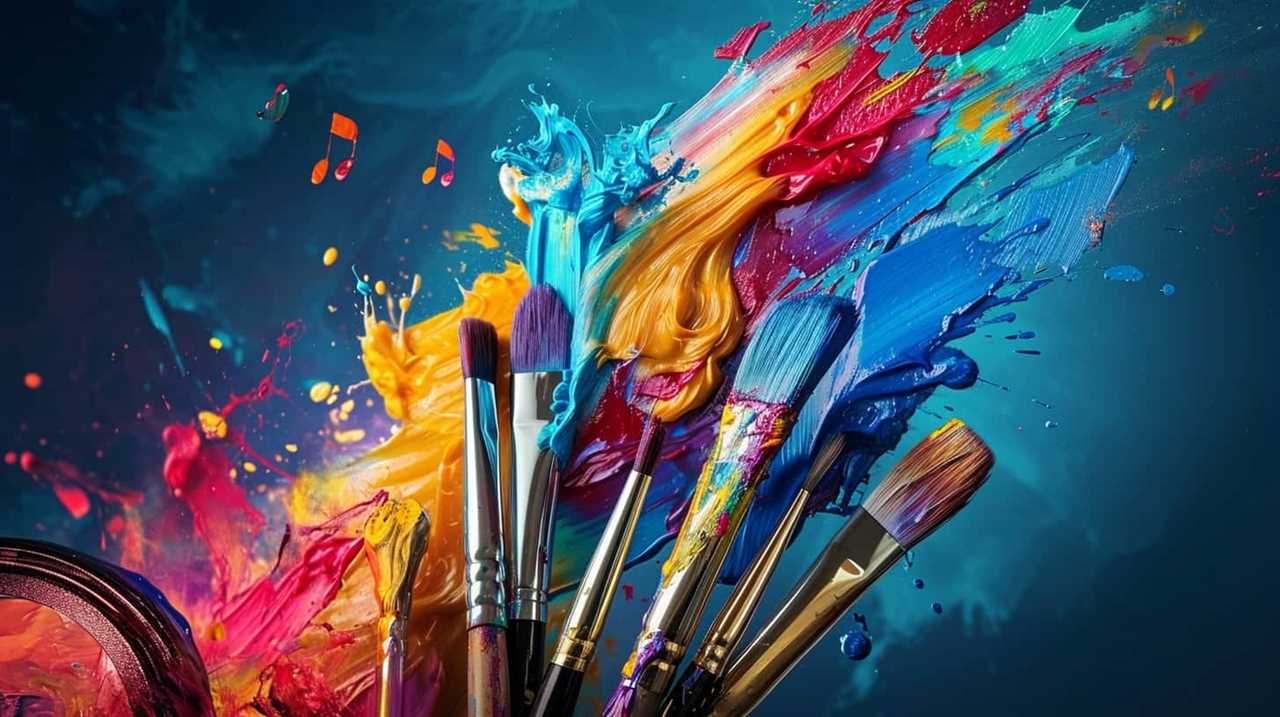
O’keeffe’s Captivation With Beauty
As we explore the captivating world of O’Keeffe’s artistic inspiration, we’re drawn to the profound beauty that permeates her work.
O’Keeffe’s ability to capture the essence of her subjects, whether it be a delicate flower or the rugged landscapes of New Mexico, is truly awe-inspiring.
Through her masterful use of color, form, and perspective, she brings forth a sense of beauty that transcends the ordinary and invites us to see the world through her unique lens.
O’keeffe’s Artistic Inspiration
When we examine O’Keeffe’s artistic inspiration, it becomes evident that her captivation with beauty stemmed from a deep connection to the natural world. Her ability to capture the essence of nature and convey it through her art is truly remarkable. Here are four aspects of O’Keeffe’s artistic inspiration that highlight her captivation with beauty:

- Intimacy with Nature: O’Keeffe immersed herself in the natural world, spending countless hours observing and studying its intricate details. This intimate connection allowed her to translate the beauty she saw into her artwork.
- Simplification of Form: O’Keeffe had a keen eye for distilling complex natural subjects into their purest and most essential forms. She eliminated unnecessary details, focusing on the essence of the subject to reveal its inherent beauty.
- Play of Light and Shadow: O’Keeffe masterfully used light and shadow to enhance the visual impact of her paintings. By carefully manipulating these elements, she created a sense of depth and dimension that added to the overall beauty of her artwork.
- Vibrant Colors: O’Keeffe’s use of vibrant colors was instrumental in capturing the vitality and energy of the natural world. She skillfully selected hues that intensified the beauty of her subjects, evoking strong emotions in the viewer.
O’Keeffe’s artistic inspiration and captivation with beauty continue to inspire and awe audiences to this day. Her ability to convey the essence of nature through her art is a testament to her deep connection and reverence for the world around her.
Beauty in Her Work
After examining O’Keeffe’s artistic inspiration and her captivation with beauty, we now turn our attention to the beauty evident in her work.
O’Keeffe’s art is a testament to the profound beauty found in nature and architecture. She had a keen eye for capturing the essence and intricacies of the natural world, often focusing on the delicate petals of flowers or the vibrant colors of landscapes. Her ability to convey the awe-inspiring beauty of nature through her paintings is truly remarkable.
Additionally, O’Keeffe also explored the beauty in architecture, particularly in her iconic paintings of New York City skyscrapers. She captured the grandeur and elegance of these structures, showcasing their unique beauty and the interplay between light and shadow.

O’Keeffe’s work serves as a constant reminder of the beauty that surrounds us, both in nature and in man-made structures.
Hockney’s Reflections on Beauty
As we explore Hockney’s reflections on beauty, we gain insight into his unique artistic perspective.
Hockney’s ability to capture beauty through different mediums, such as painting, photography, and digital art, showcases his versatility as an artist.
His work also highlights the impact of beauty perception, challenging us to question our own notions of what’s beautiful and encouraging us to appreciate the beauty that surrounds us in our everyday lives.
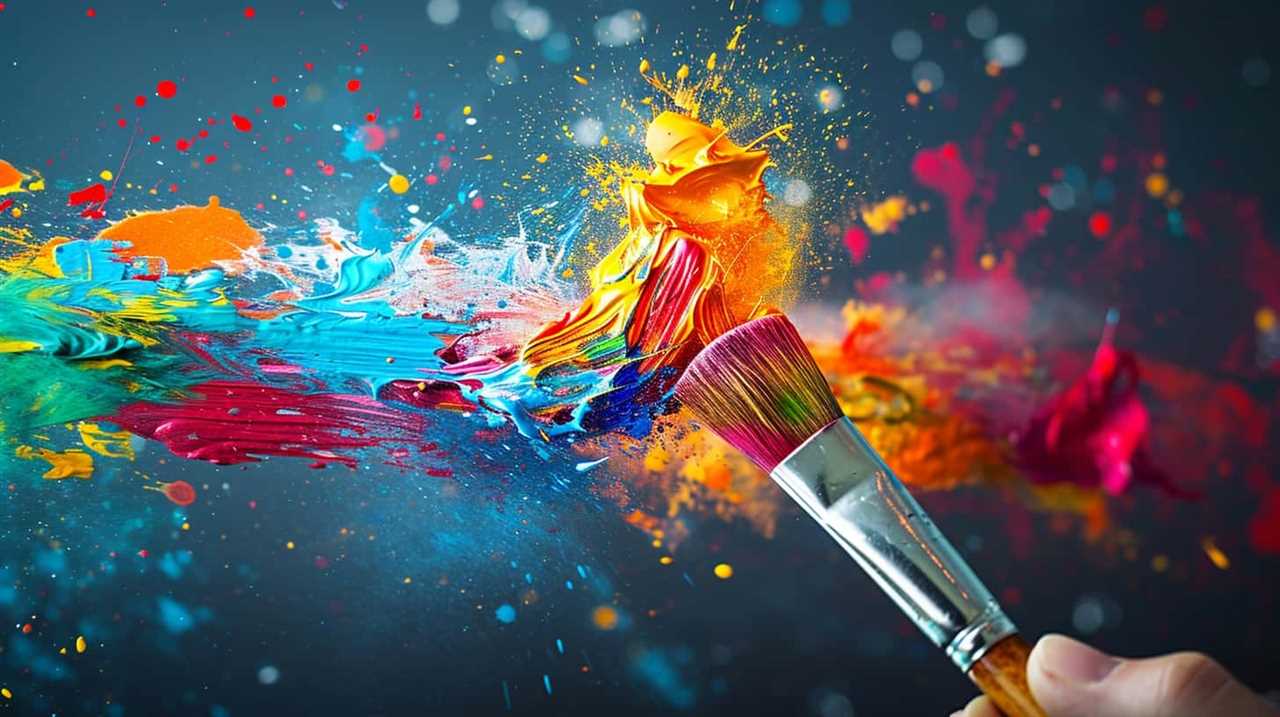
Hockney’s Artistic Perspective
In our exploration of renowned creatives’ perspectives on beauty, Hockney’s artistic viewpoint offers unique insights into the concept. Hockney’s use of color and artistic techniques reveal his deep understanding of beauty and his ability to capture it on canvas.
Here are four key aspects of Hockney’s artistic perspective:
- Vibrant color palette: Hockney is known for his bold and vibrant use of color, creating artworks that are visually striking and full of life. His mastery of color allows him to evoke emotions and convey the beauty he sees in the world.
- Exploration of perspective: Hockney often experiments with different perspectives in his artworks, challenging traditional notions of depth and space. This unique approach adds a dynamic and intriguing element to his pieces, enhancing their beauty.
- Attention to detail: Hockney’s meticulous attention to detail is evident in his artworks. Every brushstroke and every intricate detail is carefully considered, resulting in artworks that are rich in texture and visually captivating.
- Celebration of the everyday: Hockney finds beauty in the ordinary and mundane. His ability to capture the beauty of everyday scenes, whether it be a simple landscape or a still life, reminds us to appreciate the beauty that surrounds us.
Hockney’s artistic perspective offers a fresh and inspiring take on beauty, inviting us to see the world through his creative lens.
Beauty Through Different Mediums
While exploring beauty through different mediums, Hockney’s reflections on beauty offer valuable insights into the diverse ways it can be captured and expressed.
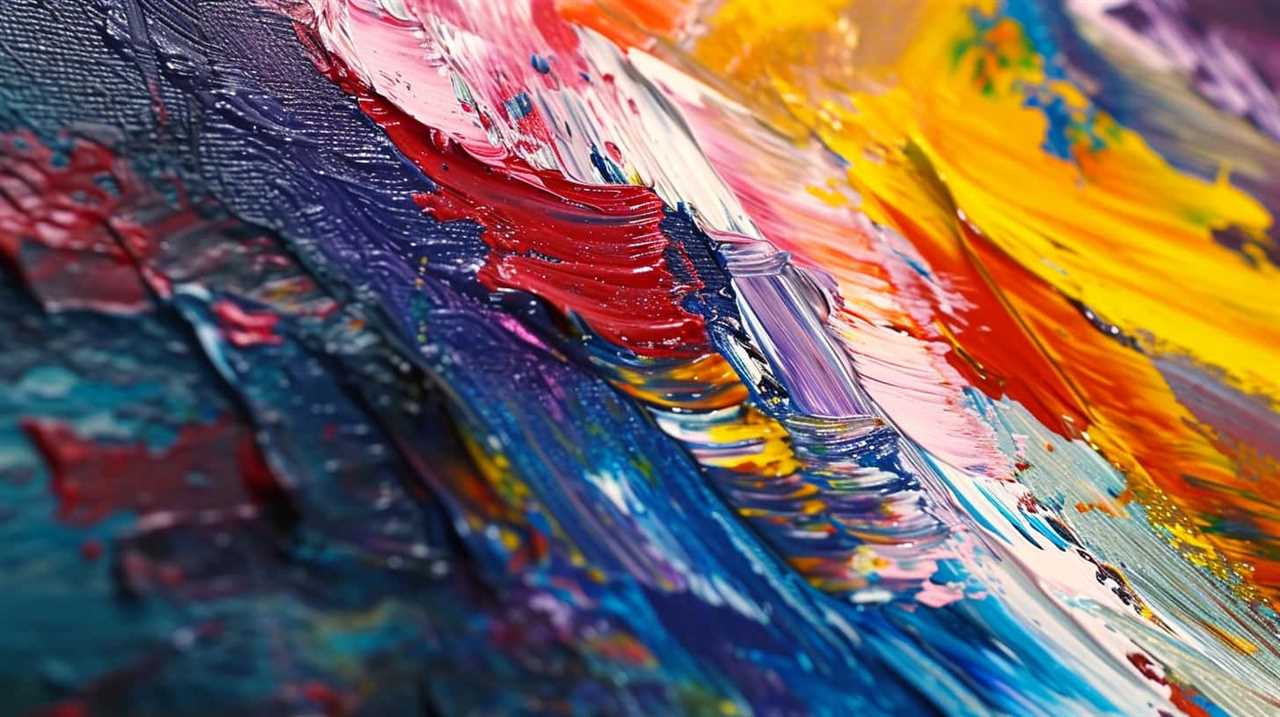
Beauty isn’t limited to visual art alone; it can also be found in literature and music. In literature, beauty is often portrayed through vivid descriptions and poetic language that evoke emotions and paint vivid pictures in the reader’s mind. From Shakespeare’s sonnets to the prose of Virginia Woolf, beauty in literature is a powerful tool that transports us to different worlds and expands our understanding of the human experience.
Similarly, music has the ability to captivate and move us, with its melodies, harmonies, and lyrics. Whether it’s a symphony, a soulful ballad, or an upbeat pop song, music has the power to evoke emotions and create a sense of beauty that transcends words.
Hockney’s reflections remind us that beauty can be found in all forms of artistic expression, and it’s through these diverse mediums that we can truly appreciate its depth and richness.
Impact of Beauty Perception
When examining the impact of beauty perception, it becomes clear that Hockney’s reflections on beauty offer valuable insights into the diverse ways it can be understood and appreciated. Hockney’s perspective on beauty goes beyond surface-level aesthetics and delves into the profound effects it can have on our self-esteem and sense of worth.
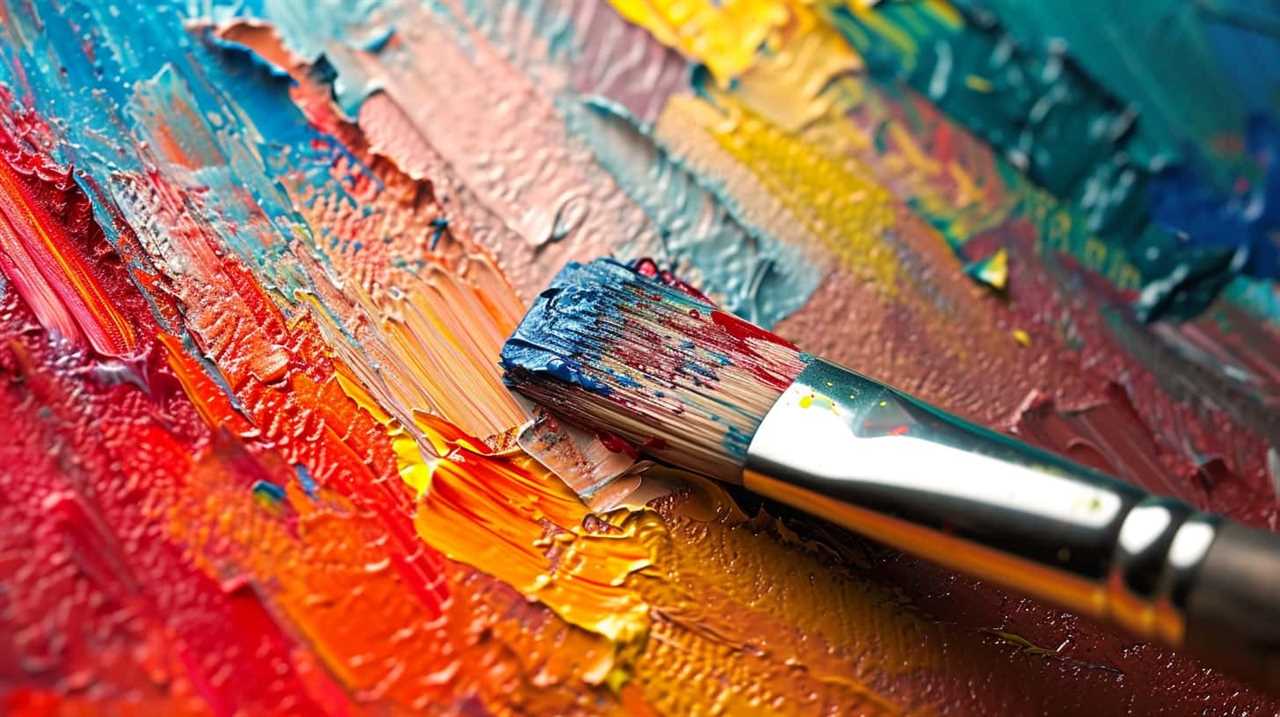
Here are four key takeaways from Hockney’s reflections on the impact of beauty perception:
- Beauty and self-esteem: Hockney emphasizes the positive impact that perceiving beauty can have on our self-esteem. When we witness and appreciate beauty, it can uplift our spirits and boost our confidence.
- Cultural influences on beauty perception: Hockney acknowledges that beauty perception is heavily influenced by cultural norms and standards. Different cultures have varying definitions and ideals of beauty, which shape our perception and understanding of it.
- Beauty as a form of expression: Hockney views beauty as a powerful means of self-expression. It allows us to communicate our emotions, thoughts, and experiences in ways that words often cannot.
- Beauty’s transformative power: Hockney believes that beauty has the ability to transform our lives. By immersing ourselves in beautiful surroundings and appreciating the beauty around us, we can experience a profound shift in our perspective and outlook on life.
Hockney’s reflections on the impact of beauty perception encourage us to explore and appreciate beauty in all its forms, recognizing its potential to shape our self-esteem and understanding of the world around us.
Pollock’s Abstract Concept of Beauty
Our exploration of Pollock’s abstract concept of beauty reveals that many renowned creatives find it truly captivating. Jackson Pollock, an influential American artist of the 20th century, revolutionized the art world with his unique artistic techniques and had a profound impact on modern art.
Pollock’s artistic techniques were groundbreaking and challenged traditional notions of beauty. He developed a style known as ‘drip painting,’ where he’d pour or drip paint onto canvas, creating intricate and dynamic patterns. This method allowed him to embrace spontaneity and express his emotions freely. The resulting compositions were chaotic yet harmonious, with a sense of energy and movement that captivated viewers.

Pollock’s influence on modern art can’t be overstated. His abstract expressionist approach paved the way for artists to explore new possibilities beyond traditional representation. His work inspired countless artists to experiment with unconventional techniques and pushed the boundaries of artistic expression. Pollock’s concept of beauty wasn’t confined to the conventional, but rather embraced the raw and unfiltered aspects of human emotion.
Many renowned creatives, including artists, critics, and scholars, have praised Pollock’s abstract concept of beauty. They laud his ability to evoke powerful emotions through his unique artistic language, which transcends traditional boundaries. Pollock’s work continues to inspire and challenge artists to this day, proving that beauty can exist beyond the confines of conventional aesthetics.
Frequently Asked Questions
How Did Picasso’s Perspective on Beauty Evolve Over Time?
Picasso’s shifting perception of beauty greatly influenced the art world. Over time, he moved away from traditional notions and embraced a more abstract and experimental approach. This evolution revolutionized the way we perceive and create art.
What Influenced Monet’s Musings on Beauty?
Monet’s fascination with beauty was heavily influenced by the Impressionist movement. The movement’s emphasis on capturing fleeting moments and the play of light allowed Monet to explore the ever-changing beauty of nature in his art.
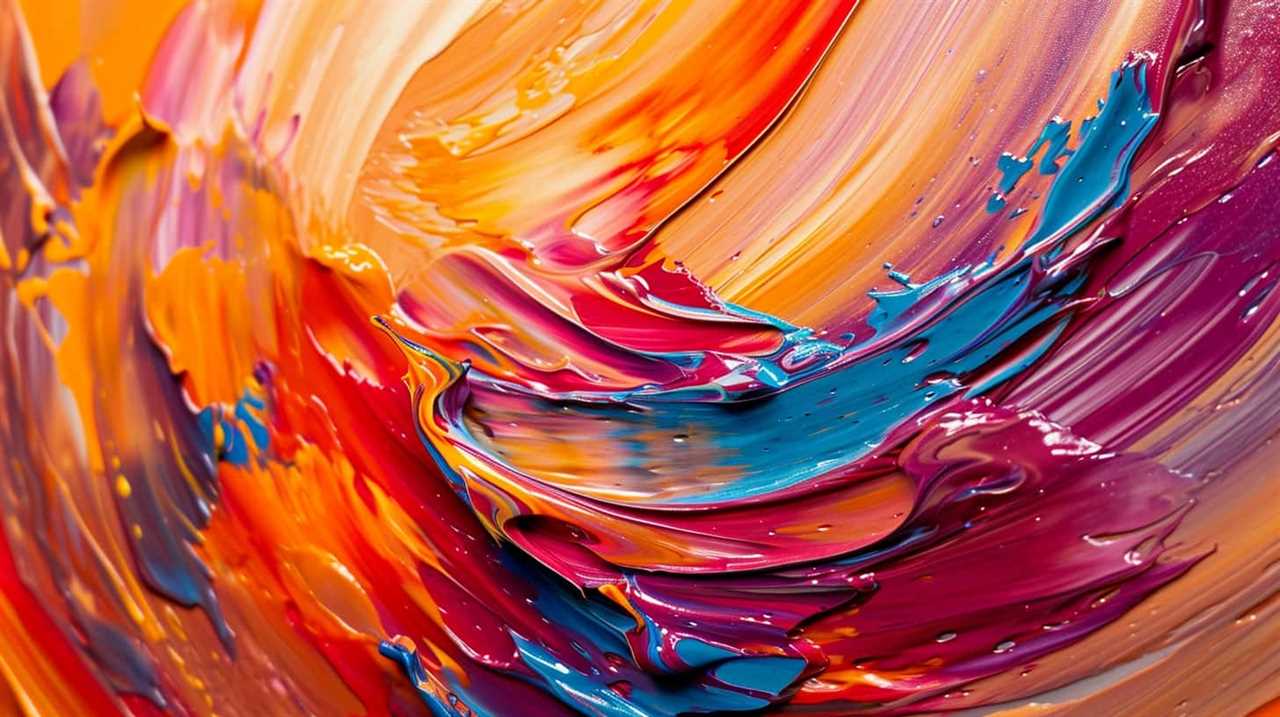
How Did Van Gogh’s Vision of Beauty Differ From Traditional Artistic Styles?
Van Gogh’s unique perspective on beauty challenged traditional artistic styles. His artistic rebellion allowed him to capture the raw emotions and vibrant colors of the world around him, creating a new and captivating definition of beauty.
What Personal Experiences Shaped Frida Kahlo’s Thoughts on Beauty?
We’ve discovered that Frida Kahlo’s perception of beauty was deeply influenced by personal trauma and her cultural heritage. These experiences shaped her unique perspective, allowing her to redefine beauty in her own extraordinary way.
How Did Warhol’s Interpretation of Beauty Challenge Societal Norms?
Warhol’s interpretation of beauty challenged societal norms by defying traditional expectations. His impact was profound, pushing boundaries and provoking thought. His work forced us to question the very essence of beauty and how it is defined.
Conclusion
In conclusion, after diving into the perspectives of renowned creatives on beauty, it’s clear that beauty is a concept as diverse as the artists themselves. From Picasso’s abstract notions to Frida Kahlo’s personal reflections, each artist offers a unique lens through which to view beauty.
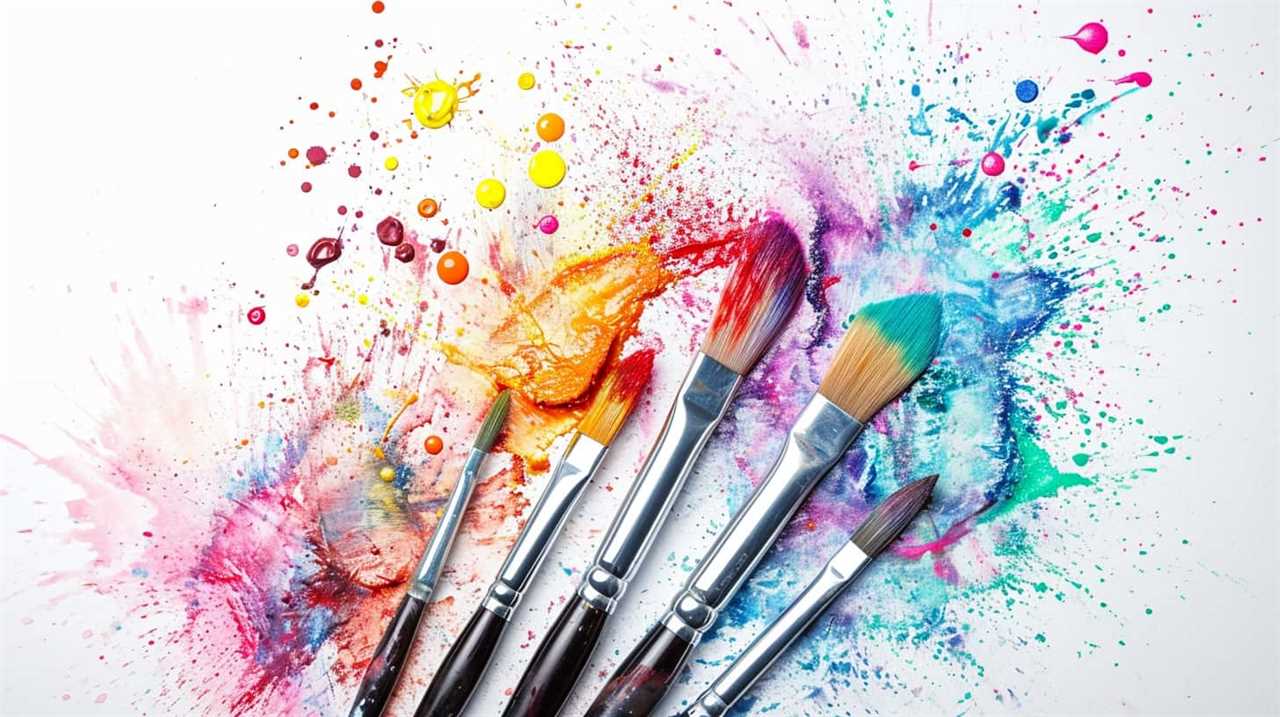
And while we may never fully grasp its elusive nature, one thing is certain: beauty is a subjective and ever-changing concept that continues to inspire and captivate us all.
So, let’s embrace the beauty of art and allow it to challenge and provoke our own notions of what’s truly beautiful.
Lauren’s talent in writing is matched by her passion for storytelling. Her love for books and deep understanding of culture and entertainment add a distinct flavor to her work. As our media and press contact, Lauren skillfully bridges the gap between afterQuotes and the broader media landscape, bringing our message to a wider audience.





